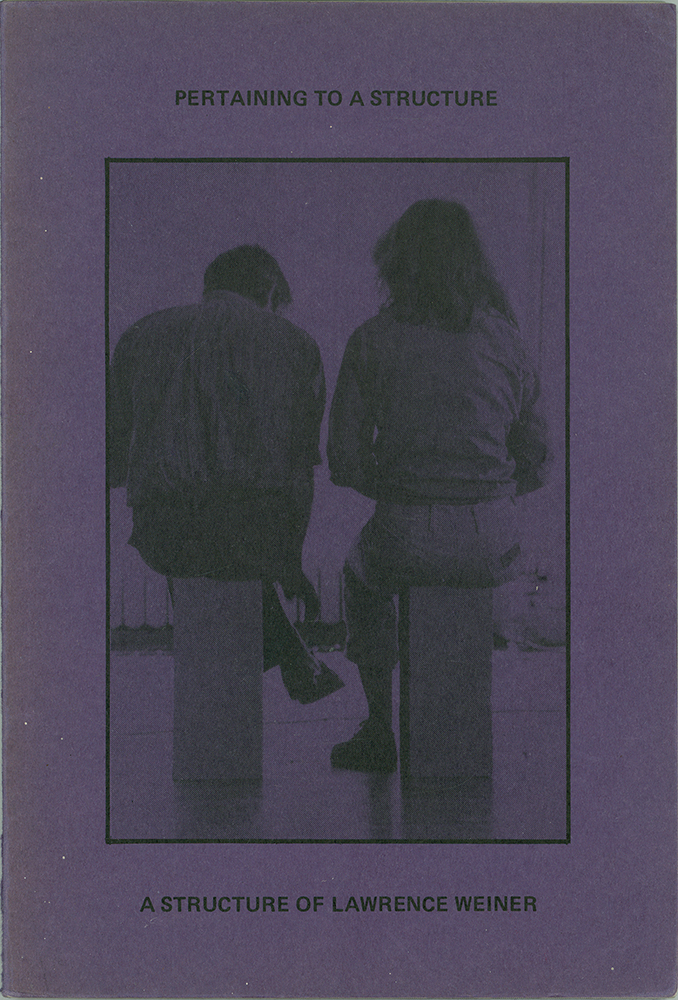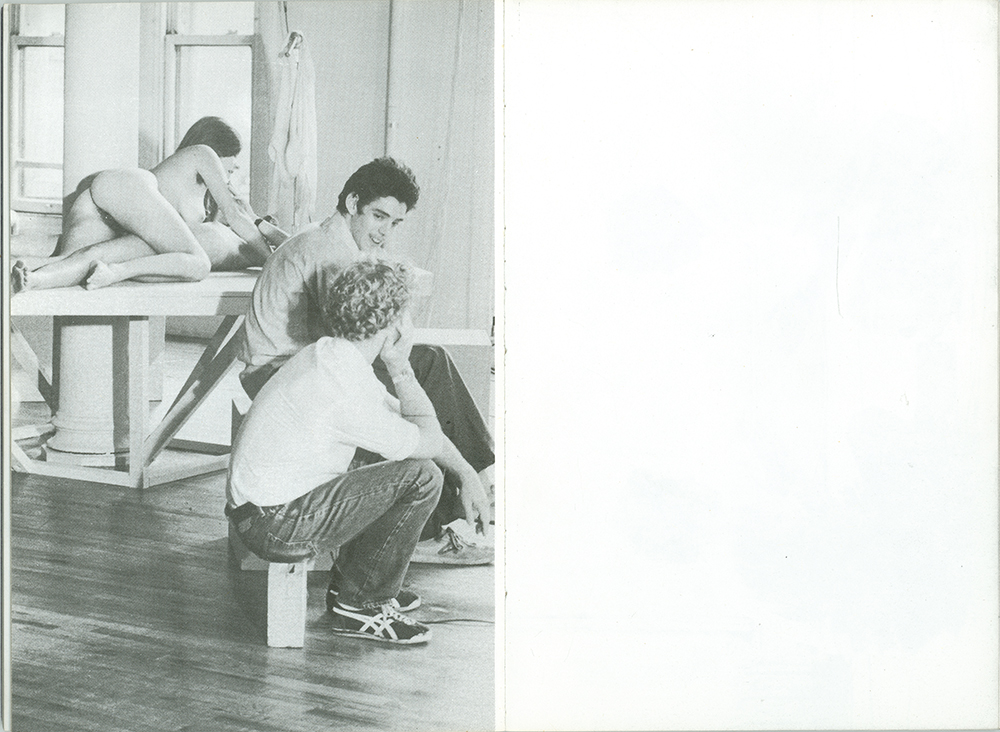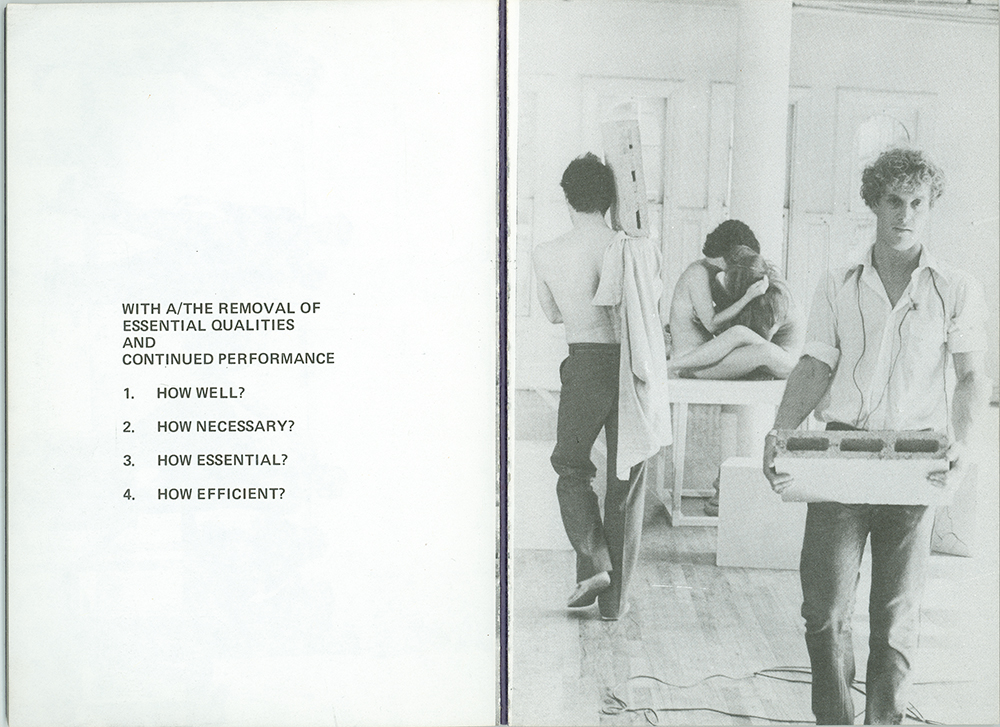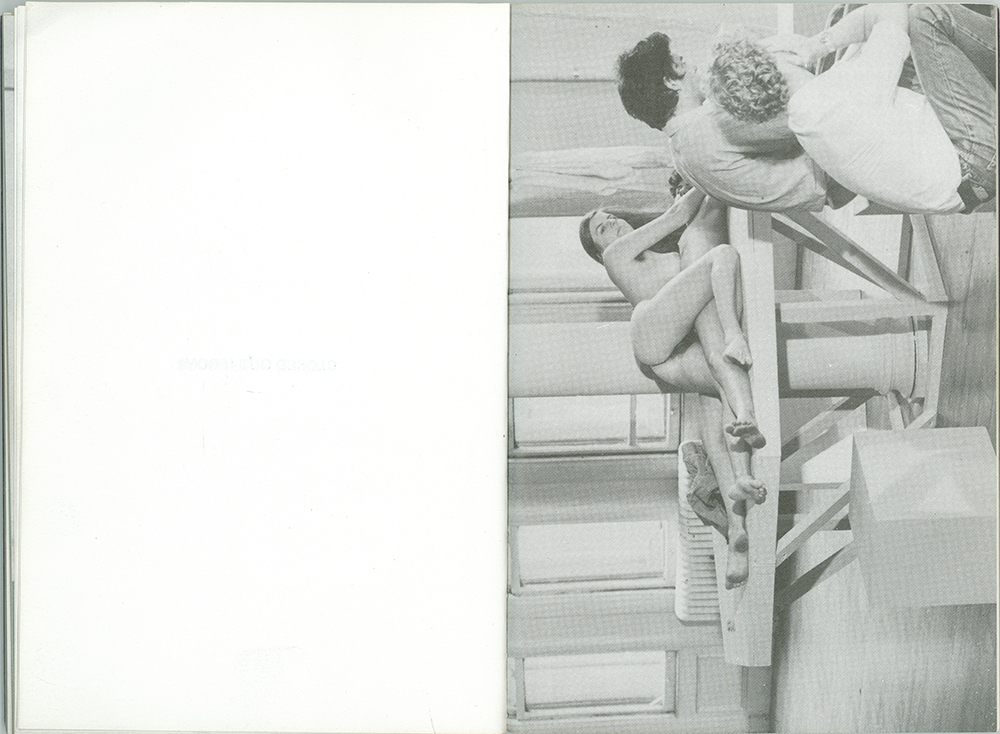WEINER Lawrence
(New York, Bronx 1942 - 2021)
BUREN Daniel
(Boulogne-Billancourt 1938)
Pertaining to a structure. A structure of Lawrence Weiner most probably concerned with the placement of the residue of one structure (part of) within the context on another
Luogo: London
Editore: Robert Self Publications
Stampatore: N. D.
Anno: [1977]
Legatura: brossura
Dimensioni: 18,1x12,4
Pagine: pp. [104]
Descrizione: libro d’artista con copertina illustrata e 24 fotografie in bianco e nero di Daniel Buren intercalate nel testo, costituito da una serie di dichiarazioni di Lawrence Weiner. I personaggi fotografati (Madeleine Burnside, Steve Blutter, Norman Fisher, Suzanne Harris, Robert Stearns, Ann-Sergent Wooster) si muovono in una stanza, alcuni trasportano dei blocchi di cemento che sistemano nello spazio, due donne si spogliano e stendendosi su una piattaforma si abbracciano scambiandosi delle effusioni. Tiratura non dichiarata di 750 - 1.000 copie. Edizione originale.
Bibliografia: Delcroix 2011: pp. 196, 197 e 436; Lailach 2005: pag. 167; Schwarz 1989: n. 19, pp. 166-172
Prezzo: € 900ORDINA / ORDER
"PERTAINING TO A STRUCTURE illustrates how structures function within a context by integrating one structure into another. The first structure functions in the context of a game, staged for a video by Weiner, are used in this book. The game involves the erection of a structure, or rather its most rudimentary form, the placement of a lintel on a post, i.e., the basic structure of western architecture. The work on which the book builds, "PLACED OVER A SPACE WITH A PROBABILITY OF SHIFT (i.e. a lintel)," presents this structure and raises the question of its stability. The second part of the book contains a treatise, "OVER THE INTENTION OF BUILDING OR AT LEAST PLACING A LINTEL," in which the question is raised as to whether an explanation content in terms of borrowed structure in justified. A narrative of past events is converted into a number of synchronous relations among the actors and objects that could as well be embedded in other specific contexts. The erection or use of a structure therefore appears as a process defined by need. The horizontal linkage of structures by equating general and specific structure replaces the hierarchy of content and illustration. Weiner applies this conception to his design of books. As indicated above, typography and design cannot be construed in terms of their general history because they are product of remnants left over from the destruction of painting. For this reason, the two disciplines are not governed by any particular style, and it would indeed be difficult to gather unity of design from the external appearance of the books. (They often have the same format simply because dimensions in printing have been standardized.) Design might be said to refer to the generalization of a specific conception that is made applicable to any number of objects; this does not apply to Weiner's endeavors. The books he has designed are embedded in specific contexts that become part of his design inasmuch as he uses them as vehicles for his work. He did not, for instance, change the pragmatic typography of the catalogue issued by the Canadian bookstore, Art Metropole, but instead had a work of his printed at the top of each page throughout so that the catalogue could be consulted as usual. For the annual social report of the Dutch postal services, their designer, Walter Nickels invited Weiner to collaborate; he contributed a work regarding the functions of post office employees in their working environment. Nikkels' design sets the tone for the presentation of the content with Weiner's "illustrations" providing a low-key commentary on the whole. This kind of personal collaboration is indicative of the role that could be played by the recipient of the work beyond that of the owner or conservator, if Weiner's work can find entry into his own. On the other hand, for the performance brochure of the Franklin Furnace book archives, Weiner devised a simple structure that can be filled at will. Since the structure intends no decisions about devised a simple structure that can be filled at will. Since the structure intends no decisions about devised a simple structure that can be filled at will. Since the structure intends no decisions about content, it is restricted to additive accumulation."




